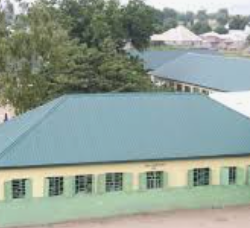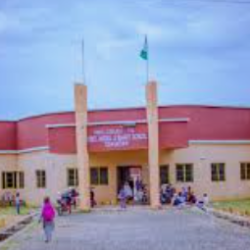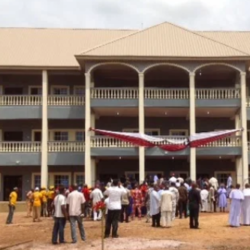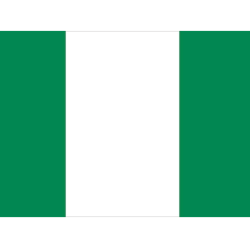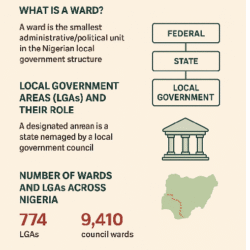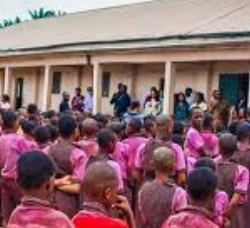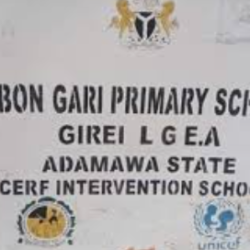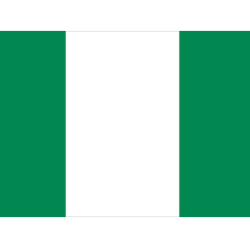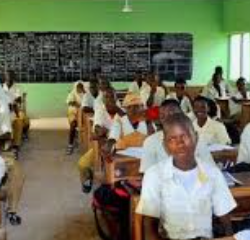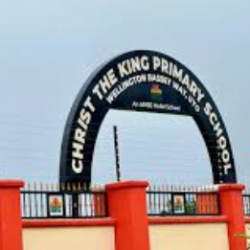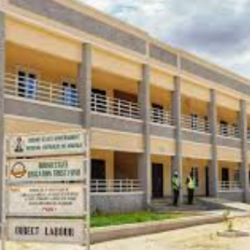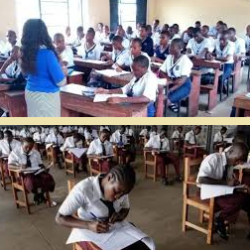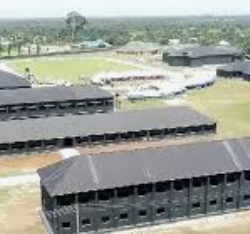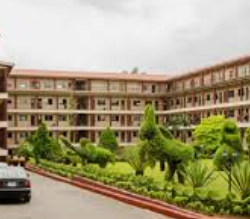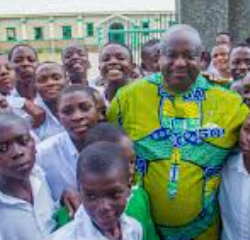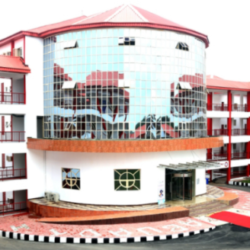Explore the extensive Abia State development projects 2016 to 2018 including classrooms, roads, water boreholes, markets, and street lights that transformed lives across LGAs.
| ABIA STATE (2O+7 PROJECTS) CLASSROOM | |||
| S/N | PROJECT DESCRIPTION | LOCATION | |
| 1 | Construction of a Block of Classroom | lsilalangwa North/South | |
| 2 | C‹^nstruction of CTassruoic Block | Inneket/Onna/Esiteket, Aba North/South | |
| C‹›nstruction of 1N o Block of Classi oom | Abayi-Port H at-court Federal Road Aba | ||
| 4 | C‹› nstruction of Community hall and 2*O*l3I‹›ck of Classl-ooms | Umukoma Okoko Item, Bende LGA | |
| MARKET | |||
| Cc› nstruction/Rehabilitation of Better Life Umuchiez e, Umunneochi Fed. Const. Abia Marl‹et State | |||
| WATER | |||
| 1 | Construction of Solar Po v•-red Borehole | Amankwo/Umuahia Primary School, Umuahia’ Abia State. | |
| 2 | l°rovision of § Nos Boreholes | (Ubaha Umunkpei Nvo Si, Ezi, Ala Nsulu & Ariam Elu) in lsialangwa North/South d‹Ikwuano UA Abia | |
| § | Fr‹Jvision of IN os Boreholes | Umuerogha, Umuala Nbaraogbom, Umuelema, Nbubo, Isialangwa North/South & Jkwuano LGA Abia | |
| ROAD | |||
| 1 | Construction of Itumbauzo Road, | Abia North Senatorial District. | |
| 2 | -r‹›sion E ontro! | Umuerogha-Umuelema Road, Umuakwu Isialanggwa North | |
| ABIA STATE (2018 PROJECTS) | |||
| CLASSROOM | |||
| JOB DESCRIPTION | L0CAT]0N | STATE | |
| Coi sti”uctioi \/Renovation of Class ”oom | Egbelu/Agalaba OsisionJa, Ngwa LGA | Abia | |
| 2 | Coi”sti iJctioiJ/ñeno‘/ation of Classi oonJ | Aba North/South | Alia |
| 3 | Conrtruction of a hlock of 3 Classroom | Government Secondary SclJoc!, Umuebe Town Aha Suuth LGA | Abia |
| 4 | cc’nstruction of a block of 3 Classroom | IsiaIa Ngwa North/Smyth LGA | Abia |
| | Con:truction/Renovation of 3f’Jos Classroom | Ikwuano LGA | Abia |
| SOLAR | STREET LIGHT | ||
| 1 | Pre ‘’sion anal IiJstallaticn of 362Nos Solar Street Ligl I | Bende, Isukwuato, Umunnochi and Ohafia I.GA | Abia |
| TOWN HALL/COMMUNITY HGLL | |||
| | Con str uction of Town Hall | Umuntu Olok oro L! zJU ahia SouthLGA | Abia |
Abia State’s Development Agenda (2016–2018)
Between 2016 and 2018, the government of Abia State embarked on an ambitious infrastructure transformation journey. Recognizing the urgent needs across education, healthcare, water access, roads, and community engagement, the administration launched multiple capital projects aimed at improving living conditions and boosting local economies.
The key goals included:
- Enhancing access to quality education
- Providing clean water through solar-powered boreholes
- Rehabilitating major roadways
- Lighting communities with solar street lights
- Stimulating economic growth through market infrastructure
Funding for these projects came from a mix of state allocations, federal constituency project funds, and development partnerships.
Focus on Education Infrastructure
Construction of New Classroom Blocks
The government prioritized education by constructing modern classroom blocks in underserved areas. Notable projects include:
- A block of classrooms in Isiala Ngwa North/South
- Classroom blocks at Inneket/Onna/Esiteket and Aba North/South
- 3-classroom blocks in Umuebe Town and Isiala Ngwa North
These constructions aimed to reduce overcrowding, enhance learning environments, and increase student enrollment rates.
Rehabilitation and Renovation Projects
Beyond new buildings, many dilapidated schools received major facelifts:
- Renovations at Egbelu/Agalaba in Osisioma Ngwa LGA
- Refurbishment of classrooms in Ikwuano LGA and surrounding areas
Locations Benefiting from Educational Investments
Projects were geographically spread to ensure inclusivity, benefiting urban and rural schools alike. These included:
- Aba North/South
- Bende LGA
- Isiala Ngwa North/South
- Umuahia and Ikwuano
Boosting Access to Clean Water
Solar-Powered Borehole Projects
To solve water scarcity, especially in schools and rural communities, the state constructed several solar-powered boreholes. For instance:
- Amankwo/Umuahia Primary School received a modern solar borehole
- Other installations occurred across primary health and educational facilities
Multiple Borehole Installations Across LGAs
A total of 10 boreholes were drilled in regions such as:
- Ubaha Umunkpei, Ezi Ala Nsulu, Ariam Elu (Isiala Ngwa North/South & Ikwuano)
- Umuerogha, Umuala Nbaraogbom, Umuelema, Nbubo
Impact on Rural and Urban Communities
This water infrastructure helped reduce waterborne diseases, decreased travel time for water collection, and supported hygiene efforts in schools.
Road Construction and Maintenance Projects
Itumbauzo Road Construction
A major rural access road was developed in Abia North Senatorial District — the Itumbauzo Road — connecting farming communities to commercial centers.
Erosion Control on Umuerogha-Umuelema Road
Due to erosion challenges in many parts of Abia, the government invested in erosion control mechanisms along the Umuerogha-Umuelema route in Umuakwu, Isiala Ngwa North.
Regional Connectivity Improvements
Improved roads enabled better trade, school access, and healthcare reach, especially in previously inaccessible areas.
Market Infrastructure and Economic Hubs
Better Life Market Rehabilitation
The reconstruction of the Umuchieze Better Life Market in Umunneochi was a major economic intervention. This modernized market:
- Offered safer stalls for traders
- Encouraged agricultural trade
- Attracted buyers from neighboring states
Stimulating Local Trade and Commerce
Local businesses flourished with better market conditions, and the economic ripple effect benefited entire communities.
Public Lighting and Security Enhancement
Installation of 362 Solar Street Lights
Over 360 solar street lights were installed across:
- Bende
- Isuikwuato
- Umunneochi
- Ohafia
These street lights were essential in reducing crime and improving the evening economy.
Benefits for Night-Time Economy and Safety
Women and traders reported safer streets and longer business hours, while students could study in better-lit environments.
Town Hall and Community Development Centers
Town Hall Projects in Umuntu and Other Areas
A new Town Hall was constructed in Umuntu, Olokoro, Umuahia South LGA, providing a hub for:
- Community meetings
- Social events
- Youth engagement programs
These centers served as civic anchors promoting democratic participation.
Monitoring and Accountability Mechanisms
Role of Field Office Controllers and Engineers
Project oversight was managed by field office controllers like QS. Victor-George Tubotamuno, ensuring budget alignment and quality control across construction works.
Stakeholder Feedback and Oversight
Community input helped improve transparency, while local leaders ensured compliance with set timelines and specifications.
Socioeconomic Impact on Abia State Citizens
Improved Quality of Life
Access to clean water, education, markets, and roads directly enhanced living standards. Women and children especially benefited from reduced burdens in daily chores.
Employment Opportunities and Local Engagement
Construction projects created jobs for artisans, laborers, suppliers, and engineers, contributing to local income growth.
Challenges Faced During Implementation
Weather, Logistics, and Political Factors
Rains, supply chain disruptions, and occasional bureaucratic delays slowed some projects, but the state’s commitment ensured eventual delivery.
Lessons Learned for Future Projects
Future projects need better pre-project planning, community mobilization, and maintenance strategies from day one.
Success Stories from Beneficiary Communities
Testimonials from Teachers and Students
Educators in Isiala Ngwa and Aba South reported increased enrollment and improved academic performance due to better classroom conditions.
Feedback from Rural Communities
Communities praised the water projects, saying they transformed everyday life, especially for women and children.
Sustainability and Future Development Plans
Maintenance Strategies for Completed Projects
Plans were made for periodic inspections, community-led oversight, and LGAs were equipped with maintenance budgets for new infrastructure.
Plans for 2019 and Beyond
The government aimed to replicate these successes, with focus on digital education, ICT hubs, and solar power expansion.
Comparative Analysis with Other Nigerian States
Performance Metrics and Benchmarks
Abia State outperformed some peers in classroom construction and solar-powered projects, positioning it as a development leader in Southeast Nigeria.
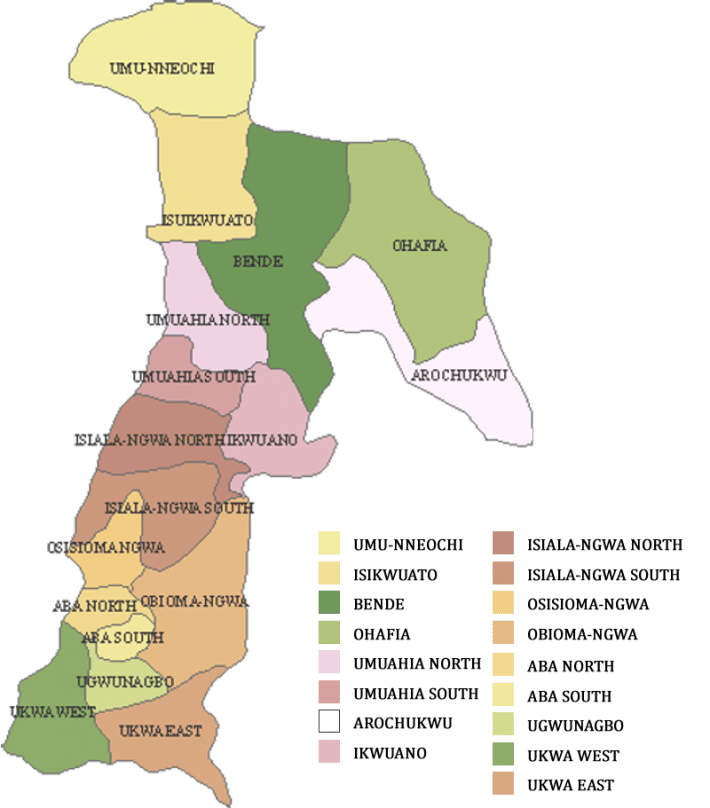
Regional Development Disparities
Lessons from Abia could inform similar initiatives in neighboring states with slower infrastructure rollout.
Government and NGO Collaborations
Partnerships in Water and Education
NGOs and donor agencies supported borehole funding and teacher training in select LGAs.
Role of International Aid and CSR
Corporate social responsibility (CSR) projects added value to state efforts, especially in water supply and school equipment.
Frequently Asked Questions (FAQs)
1. What were the major sectors targeted by Abia State development projects 2016 to 2018?
Education, water supply, roads, street lighting, market renovation, and town halls were key sectors.
2. How many solar street lights were installed?
A total of 362 solar street lights were installed across four LGAs.
3. Were rural areas included in the water borehole projects?
Yes, several rural communities in Isiala Ngwa and Ikwuano benefited from solar-powered and manual boreholes.
4. What was the impact on education in the state?
Classroom construction and renovation improved enrollment, reduced student-to-teacher ratios, and enhanced learning conditions.
5. Who supervised these projects on the ground?
Field office controllers like QS. Victor-George Tubotamuno ensured execution met government standards.
6. Will these projects be sustained in the future?
Yes, sustainability plans include community oversight, periodic reviews, and maintenance funding.

